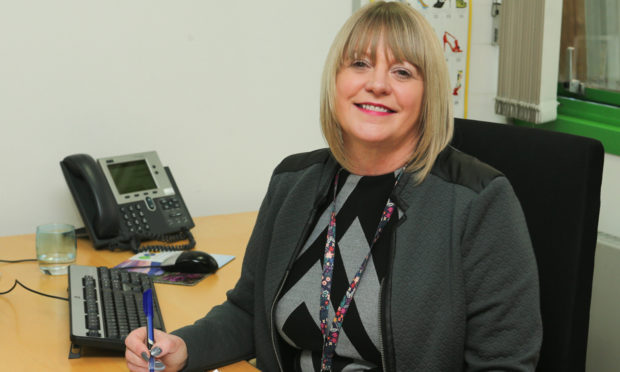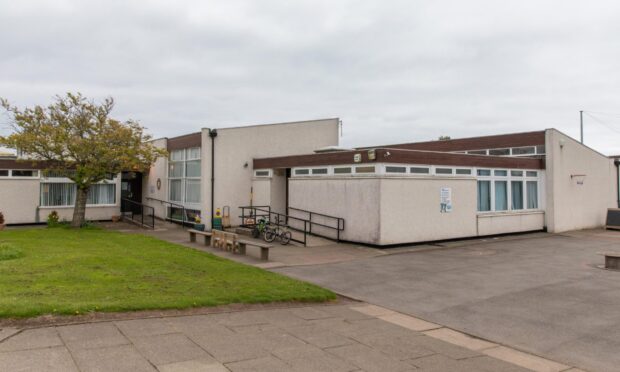The education boss of one of Scotland’s largest local authorities has spoken of the task ahead to prevent disadvantage to the ‘class of 2020’.
Fife Council has around 50,000 pupils in 157 secondary, primary and special schools and executive director of education and children’s services Carrie Lindsay said they had engaged with home learning in varying degrees during the coronavirus lockdown.
Mrs Lindsay also told us of the significant amount of work of teachers and officers to prepare for blended learning from August before the Scottish Government’s u-turn last week – just days before the summer holidays – meant they had to “buckle down” and plan for a full return instead.
In an exclusive interview about lockdown learning, Mrs Lindsay, a member of the Scottish Government’s Covid-19 education recovery group, told us that when children return to school teachers would assess what stage they were at and extra support would be provided.
I talk about the class of 2020 and the fact we want to do everything in our power not to have them disadvantaged.”
Carrie Lindsay, Fife Council
She told how educational psychology and health and wellbeing staff were involved in planning the response, which could include activities at weekends and after school to help those pupils in need of intervention.
She said: “I talk about the class of 2020 and the fact we want to do everything in our power not to have them disadvantaged.
“It’s up to us now to the take the learning they have had in the last few months and make sure that we do plug any gaps and we can continue their learning journey and support them in every way we can.
“We will be using any extra staff to support those young people who maybe have found it a bit more challenging.
“Across the world we know that there will be some impact from this [the pandemic] whether it’s educational, economic. The poverty people will now be in will also have an impact on their education going forward. It’s not just the missing out on school that will have a long term impact.”
Home learning
Concerns were raised about how much pupils were learning at home, after it was revealed that only 42% of secondary pupils in Fife were engaged with schools at the end of April.
Mrs Lindsay said engagement was around 80% in most schools but that home learning could be challenging for larger families and those with poor IT or broadband access, while other families decided to focus on their wellbeing during the crisis.
Equipment had been provided to enable connectivity for some pupils, she said, and materials delivered to others, including worksheets and activities.
She said: “People have talked about engagement levels as a negative thing where it’s not been happening and sometimes that might be the case but often it’s because it’s really challenging circumstances.
“Our schools and teachers, they know the children and the families really well, so where they have needed to provide support then they have done that and sometimes it’s been a case of families saying we just need a bit of space for our own wellbeing and then we’ll pick it up again at another point.”
Lasting change
Remote teaching developed over the last few months could lead to lasting changes in how education is delivered, she said.
Many children had thrived from the one-to-one feedback from teachers and being away from the anxiety of bustling school buildings, she said, and the online teaching could be used to increase subject choice in secondary schools.
Risk assessments had been conducted and arrangements made for social distancing and part-time attendance in every school in the region before Education Secretary John Swinney announced days before the summer holidays his intention for full-time return in August.
Blended learning contingency
Education officers and senior teaching staff spent “a lot of time” developing their blended learning model, Mrs Lindsay said.
“We had looked at a range of different models but… we had invested a significant amount of time in the model that we felt was going to work best for Fife which is now our contingency model.”
She met with head teachers shortly after Mr Swinney’s announcement last Tuesday and said: “I was hugely impressed by our head teachers who had spent all that time on the other plans and then just buckled down and said ‘right, this what we need to do’.
“The head teachers have been amazing at working with our staff and trying to make sure that everything is in place so that it’s safe for staff and safe for our children and young people to return.”
Transport challenge
In the event of a return to the blended learning model or a local lockdown, like that in Leicester, she said teachers were ready but the “biggest challenge” would be transport, with 12,000 pupils bussed to school across the region.
Since we spoke to Mrs Lindsay, the Scottish Government has relaxed social distancing on public transport to one metre but government advice is still awaited on PPE requirements, including face masks, in schools.
Mrs Lindsay said: “The plans are all there, it is just trying to make sure that we have got that transport to get the children to school. It’s just a wee bit more complex to change the arrangements around that, particularly if the distancing changes on the buses.
We would be encouraging them to think about alternative ways to get their children to school.
“What we have said already to parents is we would be encouraging them to think about alternative ways to get their children to school so that they are not always just thinking about a bus even if they have used a bus previously.
“It might be they want to encourage their child to cycle to school or they might want to drop them off near the school or they might to look at walking.”
From the start of lockdown, Mrs Lindsay said staff across the service had stepped up to the mark, including cleaners and janitors as well as teachers and pupil support assistants.
She said: “Everybody wants to do the best they can for children and young people. I think that you see that with people who work in schools, they genuinely want to do the best for children and young people in their care.”










